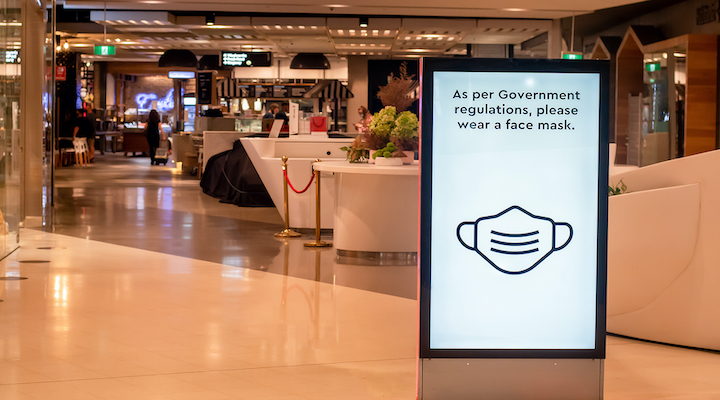The latest data from the Commonwealth Bank reveals a mixed year for retailers as the pandemic impacted industries in different ways.
It’s been a mixed 10 months for Australian retailers as the Covid-19 pandemic forced many to pivot their business model or even shut the doors for a period of time, while others, in categories such as homewares and hardware, thrived.
A second wave in Victoria followed by sudden lockdowns in various hotspots around the country disrupted momentum and hampered the recovery in many parts of the retail sector.
New data from the Commonwealth Bank illustrates this diversion of experiences. Homewares and Hardware sales recorded consistent and considerable growth during the year, with a noticeable spike between April and July as life with the pandemic set in and householders settled in to a year of DIY.
“We were doing up the house and nesting,” says Jerry Macey, CommBank’s Consumer Sector Lead. “We’re spending more time at home so we want it to be nice. So it’s no surprise that this category has been resilient to the pandemic.”
Sales in clothing and footwear retailers dived in April at the height of the first wave. They experienced further volatility until October when a significant surge occurred.
“Clothing and footwear didn’t do so well during the year until October onwards, compared to the previous year. Since October they’ve shot up. People are saying to themselves ‘I’ve got some money left, it’s present-buying time, it’s buying-for-me time, it’s coming into summer, let’s go shopping,” says Macey.
Food and beverage had a strong year – overall sales were higher early on, compared with the previous year, as we stocked up but dropped off in the second half, which could be attributed to the success food retailers had in keeping shelves mostly stocked and shoppers didn’t feel compelled to hoard goods.
“If you’re a food retailer, your struggle initially was getting the stock out there. It’s not been ‘oh where have my customers gone?’ it’s been a supply issue,” says Macey. “I think we should be really proud of our food retailers. They did a brilliant job of making sure that we were all stocked up and stopped us from worrying. They stopped the panic.”
Takeaway food had a markedly different experience. Sales plummeted in April but have steadily risen since as people chose to “eat out” at home instead of in restaurants.
“Takeaway food took a hit in the first part of the year when outlets in shopping malls were shut. But if you were a drive-through you were ok,” observes Macey.
Car dealerships are among the retailers that are now moving into positive territory as commuters shy away from public transport and buy a second car. The data shows an increase in sales for both new and used vehicles, as the lack of overseas travel has left many households with a bonus in their domestic budget.
CommBank’s Household Spending Intentions (HSI) data also showed a strong rise in November in consumer intentions to spend in retail. Momentum stalled slightly in December when the trend was flat, a softening matched by an 8 per cent fall on the year in CommBank’s household credit and debit card spending for the week ending 15 January.
Interstate travel restrictions plus lockdowns in Sydney and Brisbane had an expected negative impact on spending. Despite the weaker read, household balance sheets remain in good shape and consumer confidence hit a record high in December before slipping slightly in January.
Macey says consumer confidence remains fragile while the pandemic situation remains uncertain. But if measures to contain the virus are effective, CommBank economists expect the rebound in consumer spending to be swift and will continue to rise in line with a strengthening Australian economy.
Disclaimer
Important information: This article is intended to provide general information of an educational nature only. It does not have regard to the financial situation or needs of any reader and must not be relied upon as financial product advice. You should consider seeking independent financial advice before making any decision based on this information. The information in this article and any opinions, conclusions or recommendations are reasonably held or made, based on the information available at the time of its publication but no representation or warranty, either expressed or implied, is made or provided as to the accuracy, reliability or completeness of any statement made in this article. All statements in this article are based on CommBank transaction/merchant data from 01.01.19 – 31.12.20 unless otherwise stated. Commonwealth Bank of Australia ABN 48 123 123 124. AFSL and Australian Credit Licence 234945.

